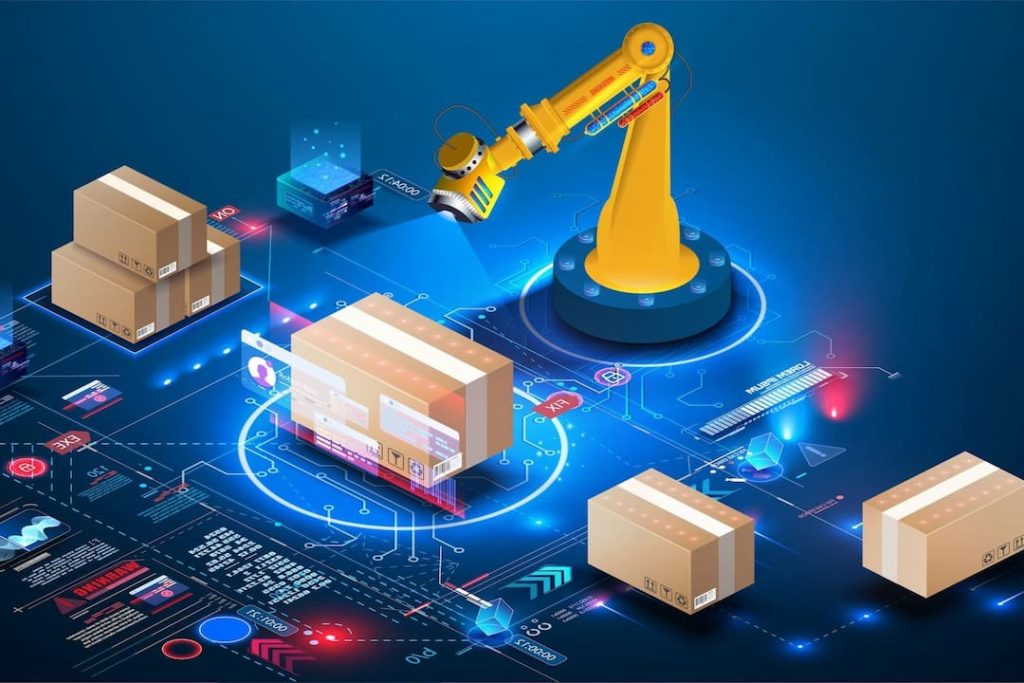Introduction
The rise of blockchain technology and its application in enterprise solutions has revolutionized industries worldwide. As businesses continue to adopt blockchain for various functions such as supply chain management, financial transactions, and identity verification, the demand for scalable, high-performance enterprise chains has grown exponentially. However, as with any technology, enterprise blockchain platforms face significant technical challenges—most notably around scalability and high-concurrency processing. These challenges hinder the ability to efficiently process a large volume of transactions, compromising performance and delaying adoption.
This article explores the key technical bottlenecks that enterprise blockchain platforms face, with a particular focus on scalability and high-concurrency issues. Furthermore, we discuss the latest technological advancements, strategies, and solutions that are enabling enterprise blockchain platforms to overcome these challenges, ensuring that businesses can effectively deploy blockchain at scale and with minimal delays.
1. Understanding the Technical Bottlenecks in Enterprise Chains
1.1 Scalability Challenges in Blockchain
Scalability refers to the capacity of a blockchain network to handle an increasing number of transactions as the network grows. In the context of enterprise blockchain solutions, scalability is essential for businesses that need to process high volumes of transactions quickly and efficiently. However, scalability is often constrained by the following factors:
- Block Size Limitations: Most blockchains, particularly older ones like Bitcoin and Ethereum, have a limited block size, restricting the amount of data that can be processed per block.
- Consensus Mechanisms: Consensus protocols like Proof of Work (PoW) and Proof of Stake (PoS) can be computationally expensive and slow, limiting the rate at which blocks can be added to the chain.
- Network Latency: As more nodes are added to the blockchain network, latency increases. This can lead to delays in transaction verification and confirmation, undermining performance and scalability.
1.2 High-Concurrency Processing Bottlenecks
In high-concurrency environments, blockchain platforms must handle multiple transactions or requests simultaneously without slowing down or causing delays. For enterprise blockchain applications, this is particularly challenging because real-time, high-speed processing is critical for functions such as:
- Instant Cross-Border Payments: International transactions must be processed quickly to avoid delays in finance, especially in industries like banking and insurance.
- Supply Chain Management: Enterprises need to ensure that their supply chains operate smoothly and that each transaction—whether it’s the transfer of goods or money—is processed without bottlenecks.
- Data Verification: In sectors like healthcare and legal, blockchain can streamline the process of verifying and recording data, but high concurrency is necessary to handle large amounts of data quickly.
The high-concurrency challenges that enterprise chains face often stem from:
- Single-Threaded Processing: Traditional blockchain networks process one transaction at a time, which can cause a bottleneck when many transactions are initiated simultaneously.
- Inefficient Data Propagation: When many transactions are propagated across the network, they can overload certain nodes, slowing down transaction processing and validation.

2. Solutions to Scalability and High-Concurrency Challenges
Addressing these technical bottlenecks requires an innovative approach. Several strategies and technologies are now being implemented to resolve scalability and high-concurrency issues in enterprise blockchain platforms:
2.1 Layer 2 Solutions: Optimizing Blockchain Scalability
Layer 2 solutions are designed to alleviate the pressure on the main blockchain by processing transactions off-chain and then reconciling them back onto the main chain. By reducing the number of transactions that need to be processed on the base layer, Layer 2 solutions can significantly improve the scalability of enterprise chains.
- Payment Channels: Payment channels like the Lightning Network for Bitcoin or Raiden Network for Ethereum allow for off-chain transactions to occur between two parties. Only the final settlement is recorded on the main blockchain, allowing for faster, cheaper, and more scalable transactions.
- State Channels: State channels are used to facilitate interactions between participants off-chain, enabling real-time transactions and instant settlement. After a series of off-chain transactions, a final state is recorded back onto the blockchain, reducing the load on the network.
- Sidechains: Sidechains are independent blockchains that are connected to the main blockchain. They can operate in parallel, reducing congestion on the primary blockchain and allowing for more transactions to be processed concurrently. Sidechains can be optimized for different types of transactions, thus improving performance and scalability.
By implementing Layer 2 solutions, businesses can offload high-volume, high-frequency transactions from the main blockchain and reduce bottlenecks caused by on-chain congestion.
2.2 Sharding: Breaking Down the Blockchain into Smaller Pieces
Sharding is a technique that involves dividing a blockchain into multiple smaller parts, or “shards,” each capable of processing its own transactions. This approach enables a blockchain to parallelize transaction processing, significantly improving scalability and reducing bottlenecks caused by high transaction volumes.
Each shard operates as an independent chain, processing transactions concurrently. The main blockchain ensures that the final state of the network is consistent across all shards. By spreading the transaction load across multiple shards, blockchain networks can scale exponentially.
- Sharding in Ethereum 2.0: The upcoming Ethereum 2.0 upgrade will introduce sharding as a key solution to Ethereum’s scalability problem. Ethereum will be divided into 64 shards, each capable of processing its own transactions and smart contracts in parallel. This approach will improve scalability while maintaining decentralization.
- Polkadot and Cosmos: These projects are already implementing sharded blockchains, allowing different blockchain networks to operate in parallel and communicate with each other. They create ecosystems where multiple blockchains (or shards) can function without congestion, providing businesses with a scalable solution to complex blockchain integration problems.
Sharding enables businesses to handle massive amounts of data and high-concurrency transactions while maintaining a decentralized structure, making it a powerful tool for scaling enterprise chains.
2.3 Optimizing Consensus Mechanisms
The consensus mechanism is a fundamental component of blockchain technology, responsible for validating and agreeing upon the transactions that are added to the blockchain. However, traditional consensus mechanisms like Proof of Work (PoW) or Proof of Stake (PoS) can create performance bottlenecks. The time it takes for nodes to reach consensus on transactions can significantly slow down processing speeds.
Several newer consensus mechanisms are emerging that aim to improve blockchain scalability and performance:
- Delegated Proof of Stake (DPoS): DPoS optimizes PoS by allowing token holders to vote for delegates who validate transactions on their behalf. This reduces the number of validators involved in consensus, increasing transaction throughput and reducing block times.
- Practical Byzantine Fault Tolerance (PBFT): PBFT is a consensus mechanism that ensures that a network of nodes reaches agreement in a fast and efficient manner. Unlike PoW, PBFT doesn’t require computational resources to validate transactions, making it faster and more energy-efficient, which is crucial for enterprise blockchain applications.
- Proof of Authority (PoA): PoA uses a set of trusted validators (authorities) to confirm transactions, significantly speeding up transaction processing times. This is particularly useful in enterprise blockchains where the number of validators is smaller, and the need for fast, reliable transactions is higher.
By implementing more efficient consensus mechanisms, enterprise chains can significantly improve their ability to process large numbers of transactions, thus addressing scalability and high-concurrency issues.
2.4 Off-Chain Computation and Hybrid Systems
Another approach to scaling blockchain networks is off-chain computation. In this model, some computations and data storage are handled outside the blockchain, while only essential data (such as transaction finality or state changes) is recorded on-chain. This reduces the load on the blockchain network and enhances performance.
- Hybrid Blockchain Models: Some enterprise solutions are combining private blockchains (where certain processes occur off-chain) with public chains (which handle the settlement and verification of transactions). This allows businesses to maintain control over sensitive data while benefiting from the scalability and transparency of blockchain technology.
By using off-chain computation and hybrid blockchain models, enterprises can offload complex computations and avoid overburdening their blockchain networks, ensuring that they can scale effectively.
3. Conclusion
Scalability and high-concurrency processing are critical challenges that enterprise blockchain platforms must overcome to effectively serve the needs of modern businesses. As the demand for blockchain solutions grows, it is essential for businesses to choose the right technologies and strategies to address these issues.
Solutions like Layer 2 networks, sharding, advanced consensus mechanisms, and off-chain computation are proving to be powerful tools for overcoming scalability bottlenecks and enabling high-concurrency transaction processing. These technologies are not just theoretical; they are being successfully implemented in production blockchain systems and have already shown their potential in improving performance and scalability.
As enterprise chains continue to evolve, the ability to scale and handle large volumes of concurrent transactions will be the key to their long-term success. Blockchain has already proven its transformative power across industries, and overcoming these technical bottlenecks will further unlock its potential in the enterprise space, paving the way for more efficient, transparent, and scalable business operations.
By adopting these innovations, businesses can ensure that their enterprise chains can scale seamlessly, enabling them to process high volumes of transactions with minimal delays while maintaining the security, transparency, and decentralization that blockchain promises.

















































